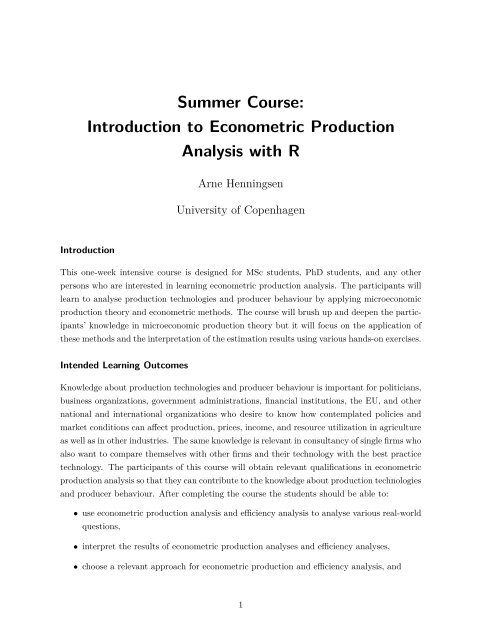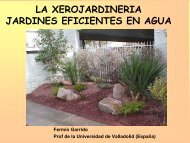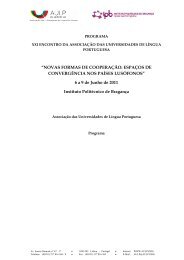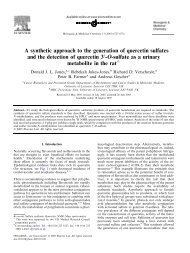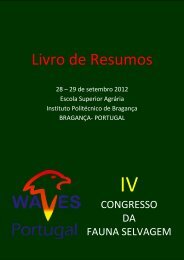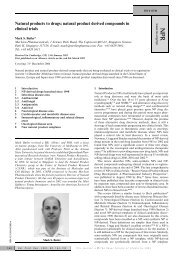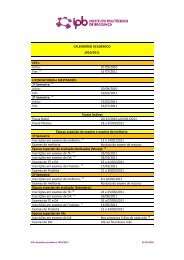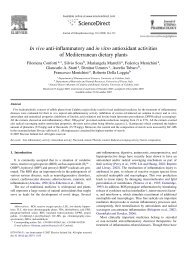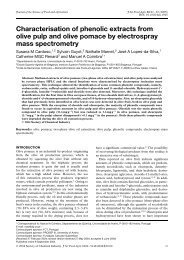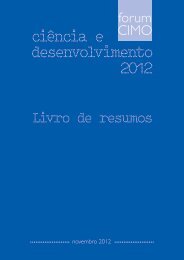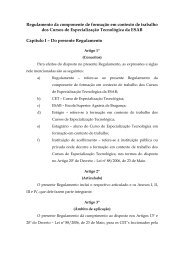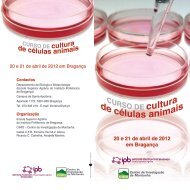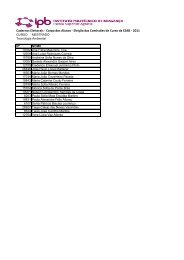Summer Course: Introduction to Econometric Production Analysis ...
Summer Course: Introduction to Econometric Production Analysis ...
Summer Course: Introduction to Econometric Production Analysis ...
Create successful ePaper yourself
Turn your PDF publications into a flip-book with our unique Google optimized e-Paper software.
<strong>Summer</strong> <strong>Course</strong>:<br />
<strong>Introduction</strong> <strong>to</strong> <strong>Econometric</strong> <strong>Production</strong><br />
<strong>Analysis</strong> with R<br />
Arne Henningsen<br />
University of Copenhagen<br />
<strong>Introduction</strong><br />
This one-week intensive course is designed for MSc students, PhD students, and any other<br />
persons who are interested in learning econometric production analysis. The participants will<br />
learn <strong>to</strong> analyse production technologies and producer behaviour by applying microeconomic<br />
production theory and econometric methods. The course will brush up and deepen the participants’<br />
knowledge in microeconomic production theory but it will focus on the application of<br />
these methods and the interpretation of the estimation results using various hands-on exercises.<br />
Intended Learning Outcomes<br />
Knowledge about production technologies and producer behaviour is important for politicians,<br />
business organizations, government administrations, financial institutions, the EU, and other<br />
national and international organizations who desire <strong>to</strong> know how contemplated policies and<br />
market conditions can affect production, prices, income, and resource utilization in agriculture<br />
as well as in other industries. The same knowledge is relevant in consultancy of single firms who<br />
also want <strong>to</strong> compare themselves with other firms and their technology with the best practice<br />
technology. The participants of this course will obtain relevant qualifications in econometric<br />
production analysis so that they can contribute <strong>to</strong> the knowledge about production technologies<br />
and producer behaviour. After completing the course the students should be able <strong>to</strong>:<br />
• use econometric production analysis and efficiency analysis <strong>to</strong> analyse various real-world<br />
questions,<br />
• interpret the results of econometric production analyses and efficiency analyses,<br />
• choose a relevant approach for econometric production and efficiency analysis, and<br />
1
• critically evaluate the appropriateness of a specific econometric production analysis or<br />
efficiency analysis for analysing a specific real-world question.<br />
<strong>Course</strong> Prerequisites<br />
The participants are expected <strong>to</strong> have a basic knowledge of microeconomic production theory<br />
(e.g. technology set, production function, isoquant, cost function, marginal product, partial<br />
output elasticity, elasticity of scale, marginal rate of technical substitution, elasticity of<br />
substitution), econometrics (e.g. ordinary least squares, hypothesis tests), and mathematics<br />
(e.g. logarithms, partial derivatives). Furthermore, some experience with econometric software<br />
(particularly R) is helpful. Students who are lacking knowledge in some of these <strong>to</strong>pics are<br />
encouraged <strong>to</strong> fill their knowledge gaps before the course.<br />
Students should bring a lap<strong>to</strong>p computer with R (http://www.r-project.org) and RStudio<br />
(http://www.rstudio.org) installed <strong>to</strong> the course.<br />
<strong>Course</strong> Schedule<br />
Monday morning<br />
• welcome<br />
• introduction <strong>to</strong> the course<br />
• brush-up: production functions and their properties<br />
• preparing data for econometric production analysis<br />
• introduction of the main data set used in the course<br />
• brief introduction <strong>to</strong> R and RStudio<br />
• calculation of variables needed for the analysis<br />
Monday afternoon<br />
• partial productivities<br />
• <strong>to</strong>tal fac<strong>to</strong>r productivities<br />
• linear production function<br />
– specification<br />
– estimation<br />
– observed and predicted output quantities<br />
– marginal products<br />
– partial output elasticities<br />
– elasticities of scale<br />
– optimal firm size<br />
– consistency with microeconomic theory<br />
– marginal rates of technical substitution<br />
2
Tuesday morning<br />
• Cobb-Douglas production function<br />
– specification<br />
– estimation<br />
– observed and predicted output quantities<br />
– marginal products<br />
– partial output elasticities<br />
– elasticities of scale<br />
– optimal firm size<br />
– consistency with microeconomic theory<br />
– marginal rates of technical substitution<br />
– relative marginal rates of technical substitution<br />
Tuesday afternoon<br />
• elasticities of substitution in case of two inputs<br />
• elasticities of substitution in case of more than two inputs<br />
• elasticities of substitution in linear production functions<br />
• elasticities of substitution in Cobb-Douglas production functions<br />
Wednesday morning<br />
• Translog production function<br />
– specification<br />
– estimation<br />
– observed and predicted output quantities<br />
– marginal products<br />
– partial output elasticities<br />
– elasticities of scale<br />
– optimal firm size<br />
– consistency with microeconomic theory<br />
– comparison <strong>to</strong> Cobb-Douglas functional form<br />
Wednesday afternoon<br />
• profit maximisation<br />
• checking conditions for profit maximisation<br />
• cost minimisation<br />
• checking conditions for cost minimisation<br />
• derived input demand functions and output supply functions<br />
• derived price elasticities of input demand and output supply<br />
3
Thursday morning<br />
• cost functions and their properties<br />
• Shepard’s lemma<br />
• Cobb-Douglas cost function<br />
– specification<br />
– estimation<br />
– marginal costs<br />
– cost flexibility, elasticity of size, and elasticity of scale<br />
– consistency with microeconomic theory<br />
Thursday afternoon<br />
• Cobb-Douglas cost function (continued)<br />
– imposing homogeneity in input prices<br />
– derived input demand functions<br />
– derived input demand elasticities and their properties<br />
– marginal costs, average costs and <strong>to</strong>tal costs curve<br />
• short-run cost functions<br />
• Translog cost functions<br />
Friday morning<br />
• s<strong>to</strong>chastic frontier analysis<br />
• error components frontier<br />
• s<strong>to</strong>chastic frontier production function<br />
• measuring technical (in)efficiency<br />
• Cobb-Douglas s<strong>to</strong>chastic frontier production function<br />
• Translog s<strong>to</strong>chastic frontier production function<br />
• efficiency effects s<strong>to</strong>chastic production frontier<br />
• Cobb-Douglas efficiency effects s<strong>to</strong>chastic production frontier<br />
• s<strong>to</strong>chastic cost frontiers<br />
Friday afternoon<br />
• technical change<br />
• decomposition of changes of <strong>to</strong>tal fac<strong>to</strong>r productivity<br />
• summing up<br />
• farewell<br />
4
<strong>Course</strong> Literature<br />
• Chambers, RG (1988): Applied <strong>Production</strong> <strong>Analysis</strong> – A Dual Approach, Cambridge<br />
University Press.<br />
• Henningsen, A (2012): <strong>Introduction</strong> <strong>to</strong> <strong>Econometric</strong> <strong>Production</strong> <strong>Analysis</strong> with R, unpublished<br />
lecture notes, University of Copenhagen (will be provided <strong>to</strong> the participants<br />
as PDF file).<br />
Assessment, Work Load, and ECTS<br />
The participants will get a (voluntary) homework assignment that they can send <strong>to</strong> the teacher<br />
no later than four weeks after the course. In case of a positive assessment of the homework<br />
assignment, the participants will get a certificate that they passed this MSc-level course and<br />
that it had a work load of 70 hours, which corresponds <strong>to</strong> 2.5 ECTS credit points.<br />
PhD students can alternatively choose <strong>to</strong> write a short paper, where they analyse an own<br />
data set with the methods that they learned in the course. If they send the paper <strong>to</strong> the<br />
teacher no later than three months after the course and their paper is positively assessed, they<br />
will get a certificate that they passed this PhD-level course and that it had a work load of<br />
170 hours, which corresponds <strong>to</strong> 6 ECTS credit points.<br />
5


